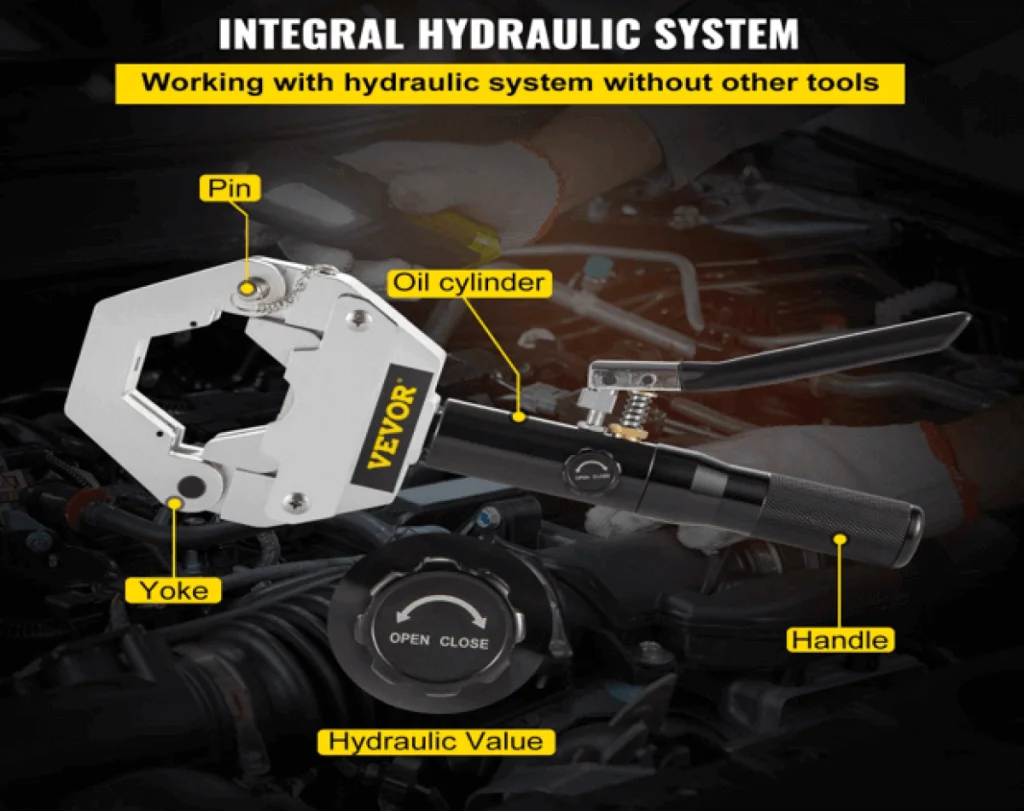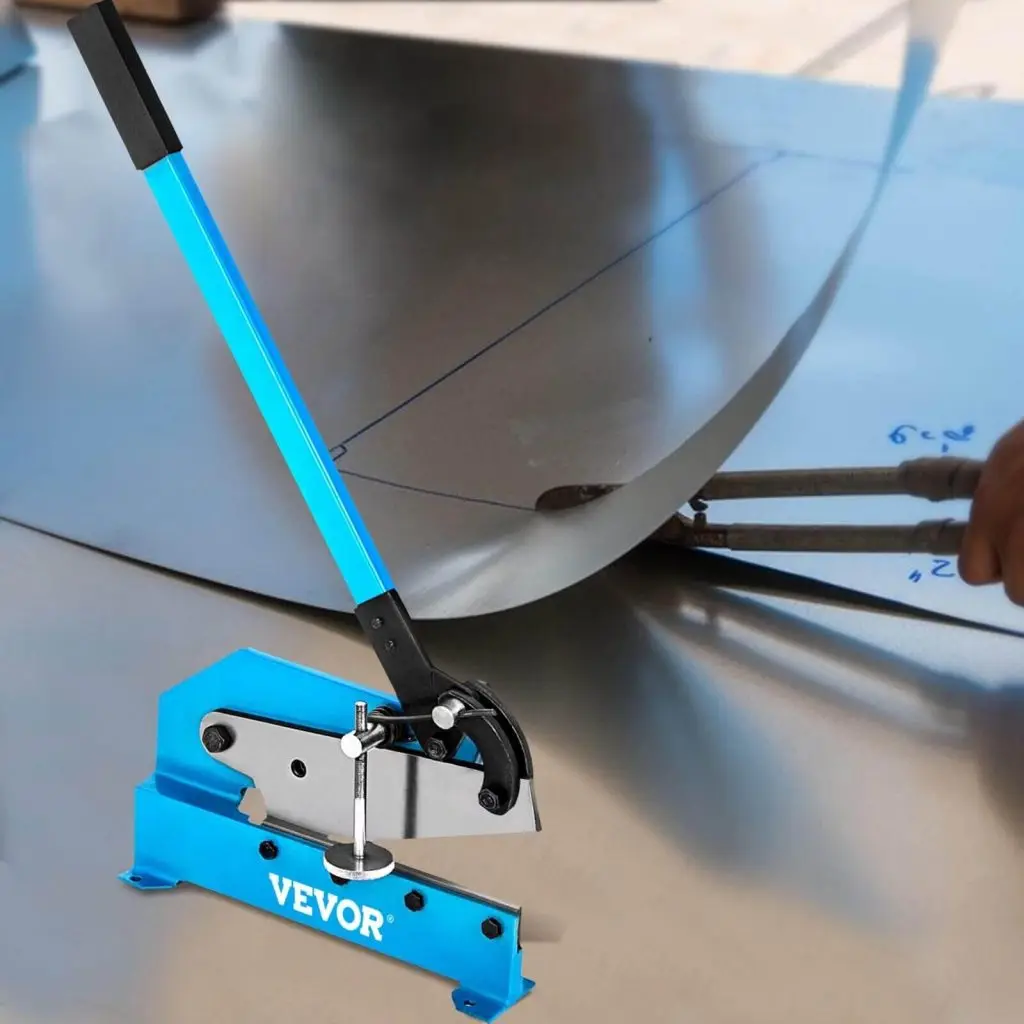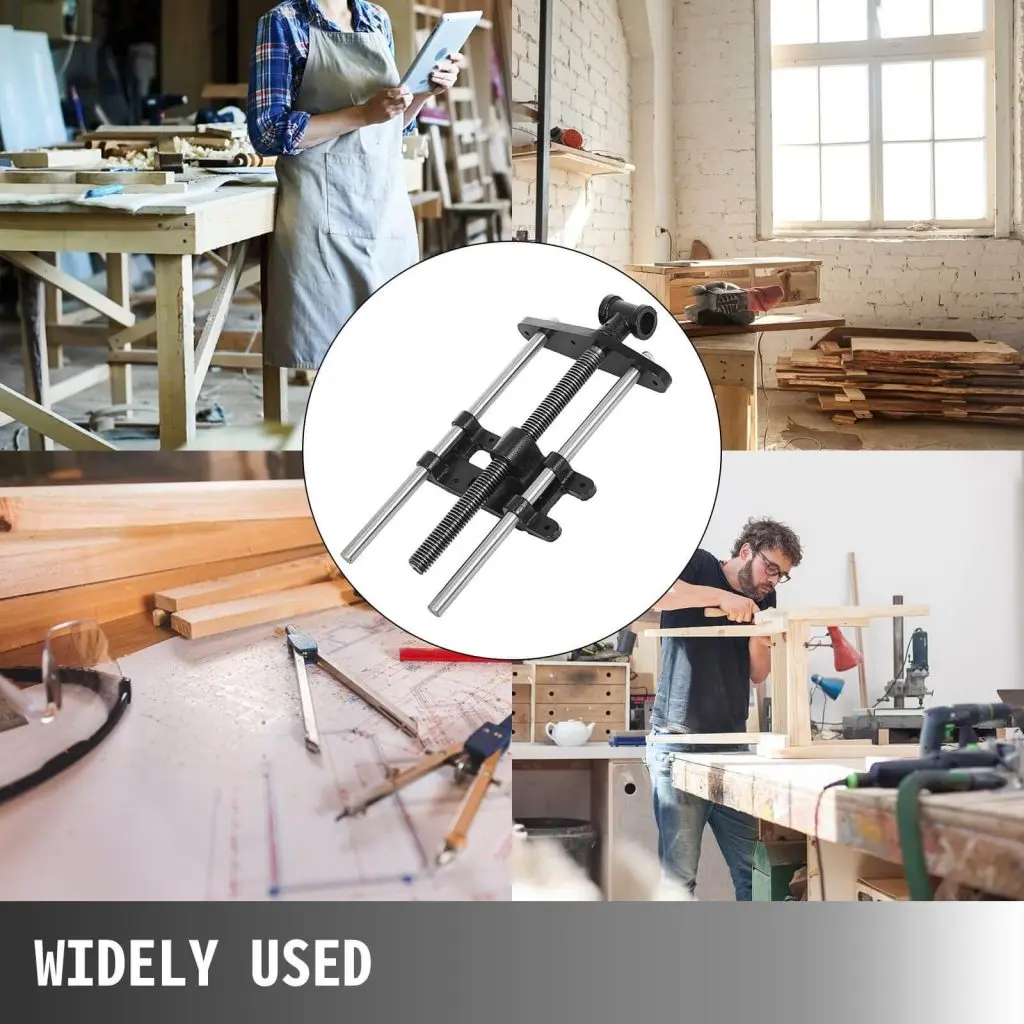Difficult to choose between a circular saw or a table saw? This in-depth guide will help you select the one according to differences and uses. Picking up the right saw can be challenging for your project because both table and circular saws have benefits and drawbacks.
Which brand is best when choosing between a table and a band saw? Besides durability, VEVOR’s table saw’s sturdy design offers stability and noise-free operation for precise cutting. Without compromising the unleashed creativity, it allows all artisans of all levels to perform well without any distractions.
Table of contents
What is a Circular Saw?
A circular saw with a blade positioned above a base plate is usually called a skill saw. You can lower and raise the blade cutting depth using a slot plate. An angle blade offers a cut angle, and you need to place the plate on the material and position yourself behind the circular saw to use it. While directing the blade, push the saw in the cutting direction. Circular saws vs. table saws need safety precautions while being used for several reasons. You can’t see what is in the paths due to this blade exposing and cutting below the workpiece. So, if you need to be more careful while using it, you can cut your fingers. A kick-back can be caused due to a material stuck in the blade and providing significant harm.
Caution is necessary due to these dangers. Always read the manufacturer’s guidelines before using the right blade, and keep your fingers away from the blades. The portability is the main feature of the circular saw because these tools are light, compact in size, and can quickly move from one place to another. However, its tiny structure is ideal for cutting in tight spaces where any other saw can be challenging to operate.
The main components of a circular saw vs. a table saw are:
- Trigger Switch
- Motor
- Handle
- Blade Guard
- Bavel Adjustment
- Base Plate
- Blade
- Arbor and Spindle
- Blade Washer
Types Of Circular Saw Vs Table Saw
You can cut various materials like metal, plywood, lumber, and PDF through circular saws. Circular saws have different types and different working applications. Some of them are:
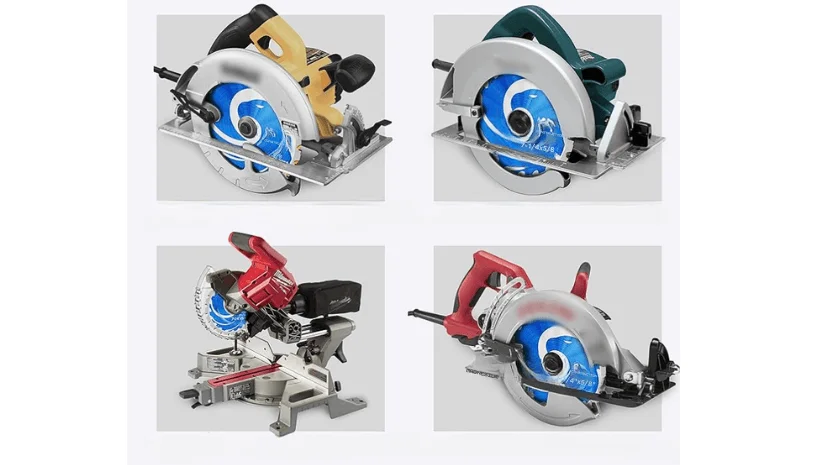
Worm Drive Circular Saw: In this type, a motor is placed behind the blade, and a worm gear mechanism drives the blade. This design offers better performance and more torque, suitable for cutting heavy materials. They are used in roofing and framing tasks.
Standard Circular Saw: A common type of circular saw in which the motor is located alongside the blade, reducing its size and weight. They’re versatile for crosscuts, bevel, and rip cuts.
Miter Saw: Miter saws are highly recognized for using a circular blade to create angle and miter crosscuts perfectly. Their pivot arms allow the blade to be angeled. They’re used for trim work, framing, and angled woodworking projects.
Trim Circular Saw: A compact or mini saw, lighter in weight than standard circular saws. Design for trim work such as trimming, molding, and other small material pieces. Carpenters, DIY enthusiasts, and cabinetmakers often used them for detailed woodworking.
Plunge Cut Saw: They’re designed for creating straight cuts, large plywood sheets, etc. With a guide rail track, they offer accurate and straight cuts in all directions. They’re highly used in cabinetry, carpentry, and furniture making.
Table Saw Vs Circular Saw
A table saw is an ideal tool for wood cutting- a tabletop A saw blade is equipped with an opening through which the saw blade protrudes. A rip fence usually cuts the material in a table saw. A workpiece is placed before the blade and cuts by pressing down. Large materials like plywood sheets can be handled through a blade saw. Due to its heavier weight, it’s challenging to transport the table saw. But usually, they’re equipped with wheels that make them portable.
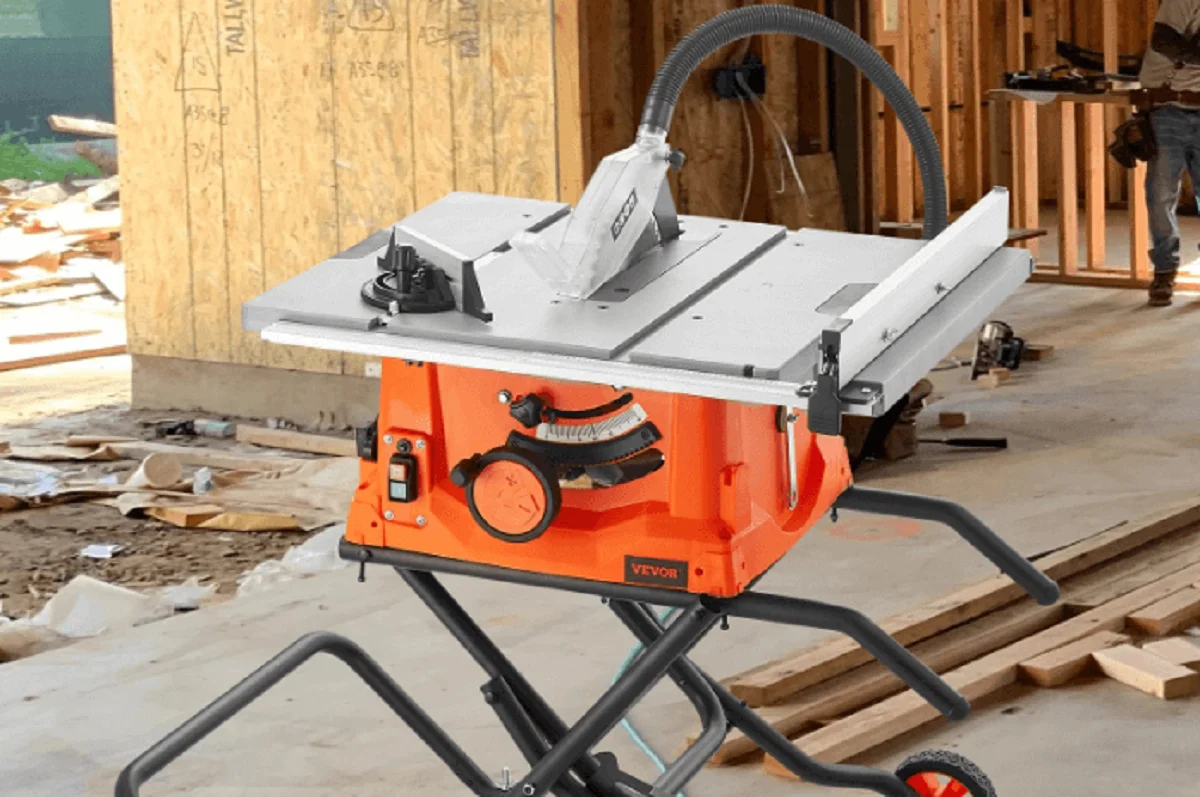
The two main features that enhance table saw vs circular saw precision:
Rip Fence
These guides work parallel to the blade saw and guide and align the workpiece. Along with its length, it ensures a material is cut evenly and accurately. You can adjust the rip fence with different distances from the blade and allow precise cuts at a range of widths. A high-quality table saw has an adjustable and sturdy rip fence that ensures cutting accuracy.
Miter Guage
It’s an efficient device for crafting angled cuts on the table saw. It is made of metal or plastic connected to a table surface and can be adjusted to different angles while the table saw is running. To create a miter corner, this gauge has a 45-degree angle. This tool provides accuracy and precision in angle cuts by using the blade as a guide. However, table saws provide exceptional precision. From creating DIY tasks to complex furniture-making with features like miter gauge and rip fence, you can confidently handle various tasks.
No more tiredness of getting the best wood pieces. Now, with the VEVOR table saw, you can have a seamless cut every time. A 15-amp motor is equipped to cut various sizes of wood easily at a high speed of 5000 RPM. With its 40-tooth blade, you can dramatically improve the cutting efficiency.
VEVOR table saw features a full-length, double-sided fence and a measuring guide rail for reliable and smooth rip cutting. The result will amaze you. You can safely put the blade to your desired angle (-60° to 60° ) for brave cutting.
Table Saw vs Circular Saw: What’s the Difference?
As we know, both Circular and table saws provide excellent results. Still, due to different features and working efficiency, they both have some differences compared to their versatility, portability, safety, etc:
Usage
Table saws are easier to use than circular saws and provide results after going out of the box. The table saw’s rip fence makes creating long and straight cuts easier. With a rip fence, you can make identical cuts on various pieces of wood by setting the fence once. While using a circular saw, you’ve to guide them along your wishing line angle. You must practice before using a circular saw, as using freehand is challenging. An optional straightedge circular saw is easier to use.
Portability
The most significant difference between circular saws and table saws is their portability. Table saws vs. circular saws are heavier than table saws and challenging to transport. You can easily carry the circular saw wherever you go.
Versatility
Circular saws vs table saws have a slight edge in versatility as table saws are restricted in rip cutting, crosscuts, and miter cuts in various materials such as plywood and wood. On the other hand, circular saws create plunge and compound cuts. With the right blade, you can use a circular saw to cut through brick, tile metal, etc.
Safety
If you use them properly, table saws can be safe. Circular saws are less dangerous to use, but compared to table saws, they’re safer. But reading instructions before using the table and circular saw is always essential.
Cost
As table saws are bigger than circular saws, they cost you more. Based on their features and specifications, a basic table saw is less than $200, whereas circular saws are less than $50.
Accuracy
Compared to the accuracy, the table saws are a clear winner. Grateful to their rip fence, table saws easily create long and straight cuts. As circular saws still don’t have a rip fence, you can use accessories or straight edges to enhance their accuracy.
When to Use Each Saw: Making the Right Choice for Your Project
Which is the right saw to invest in? Circular or table saw? A table saw vs a circular saw is a great choice if you require a lot of identical cuts. Regarding versatility, circular saws efficiently get plunge cuts, compound cuts, and other materials such as cincrete and metal. You can use a circular saw freehanded or straightedge, while table saws are more precise than circular saws. But if you’re budget-constrained and your work doesn’t demand high-end quality, go for the circular saw. But if you’ve money and area space, table saws are worth the investment. Whatever you choose, choosing the saw that’s best for your project and needs is always essential.
FAQ’s
What are the key differences between a table saw and a circular saw?
Table saws are not suitable for cutting materials like metal or concrete, but circular saw is used for plunge cuts, compound cuts, and other types of cuts
Is a table saw or a circular saw better for beginners in woodworking?
Yes, both are remarkable, but the table saw has top-notch features. Going for a circular vs. a table saw is recommended if you’re a beginner.
Can a circular saw perform the same tasks as a table saw?
Yes, both circular and table saws have a rotating blade. In general, circular saws are hand-held tools that cut through wood, but a table saw is a device over which wood passes.
What safety features should I look for in table saws and circular saws?
While using a table saw or circular saw, use a riving knife and kick-back finger for all operations. Keep the face and body far from the blade saw and provide and ensure the saw table has efficient space and support.
Summing Up
Both circular and table saw unique features make them ideal for performing a job. When buying which saw is efficient, always think about the nature of the cuts you want and the material you want to cut. Choose a table saw if you’re a pro of an efficient workspace. Explore the versatility and reliability of table saws with the VEVOR table saw, which has exceptional and durable features. Its powerful motor and innovative safety features allow you to handle any project with confidence and ease.



